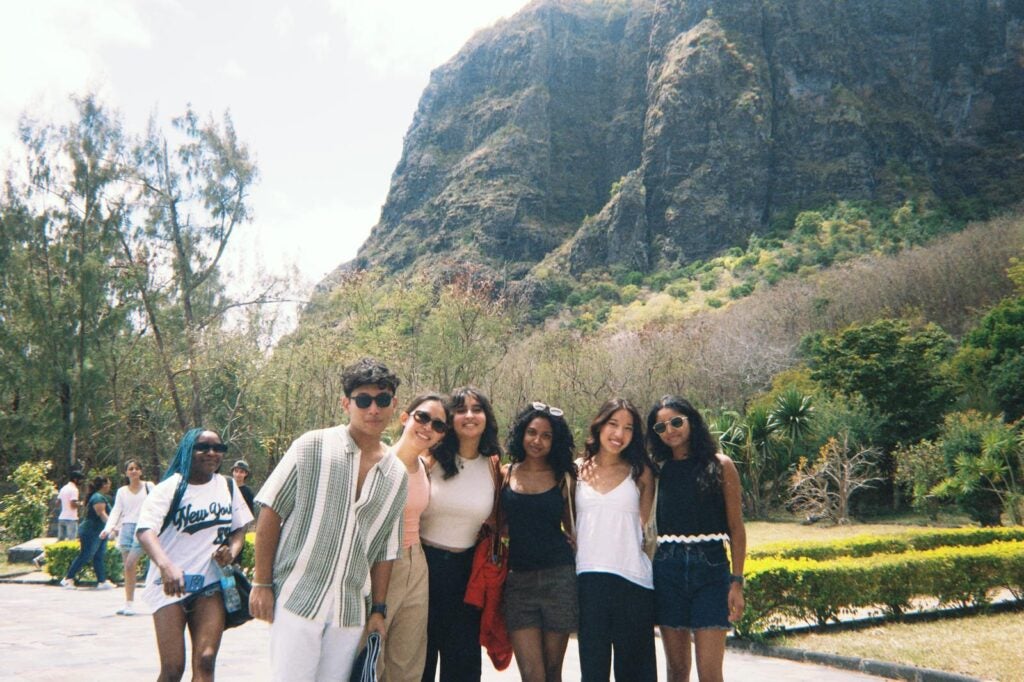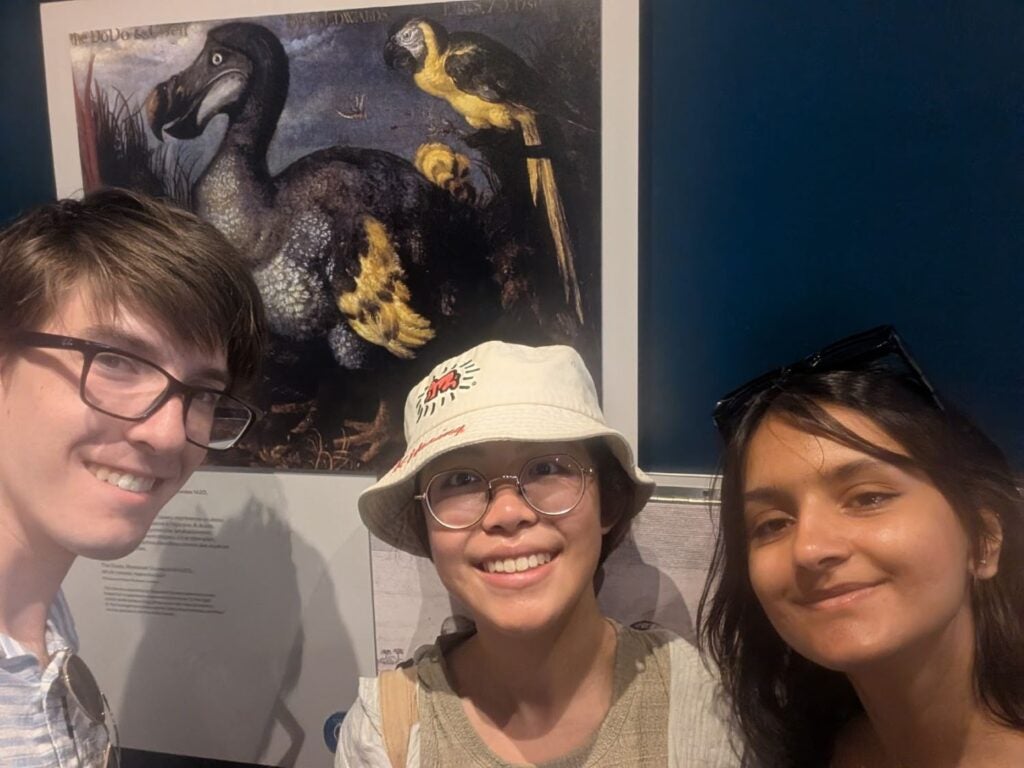Two Campuses, One Island: Georgetown’s Global Education in Action

The UNESCO World Heritage sites were incredible. The museum collections, world-class. But Lucas Solomon’s favorite memory from Mauritius? Hours on bicycles with friends from both Georgetown campuses, stopping to talk with anyone willing to share their stories. It’s the kind of moment you can’t plan—and exactly what Georgetown’s approach to global education makes possible.


This semester marked a historic milestone: the first time the award-winning Zones of Conflict, Zones of Peace program brought together students from Georgetown’s campuses in Washington, DC and Qatar. Taught by professors awarded the Sonneborn Chair for interdisciplinary collaboration–Cóilín Parsons and Ananya Chakravarti from Washington, DC, and Rogaia Abusharaf from Qatar–a dozen Bachelor of Science in Foreign Service students from each campus learned from each other while exploring how Mauritius navigates multiculturalism and identity.
Breaking Down Mystery
Patrick van Eyck, an International History major, admitted the Qatar campus felt distant before the trip. “We don’t hear much about the GU-Q campus at all on the Hilltop, it’s a bit mysterious even,” he said. What he discovered transformed his perspective. “Basically everyone in our class on the Doha side was from a unique country, and I got to hear firsthand about growing up in places like Nepal and South Sudan.”
Lucas Solomon, a Culture and Politics major in DC, added that the students “both complement and challenge the dominant perspectives and biases influenced by our location in the US capital and our largely American campus community.” For Jaelene Lyman, an International Politics major from GU-Q, the DC students also challenged her own views. “They often approached topics from angles I hadn’t considered,” she said.
Student trip leader Lawrence Marrarac, who had been on a previous Zones trip with just GU-Q students, pointed out how the human connections formed became the ultimate learning experience. “One of the best parts of the program was seeing how easily students from our Doha and DC campuses connected. Each evening, we’d come together again to share stories, laugh, and reflect on the day. Rooming with people from different campuses made those connections even stronger and turned them into lasting friendships.”
As the group explored historical sites and met local scholars, conversations deepened between the students. “I truly felt I was engaging in the global perspective the School of Foreign Service prides itself on,” Solomon reflected.
When Learning Becomes Life
For Dr. Abusharaf, it was proof of concept for a model of learning pioneered last Spring when she and her fellow Sonneborn Chairs took a cross-campus course to India. “Traveling together helps them embody the type of intercultural diplomacy that characterizes exchange in the Indian Ocean World,” she said.
It led to an unparalleled enthusiasm for understanding the world and connecting to others. “On our final day in Mauritius, a few friends from both campuses and I rented bicycles and rode them around the town of St. Martin for hours” shared Solomon. “We stopped periodically to have long conversations with anyone who wanted to tell us about the area, their family, or anything they felt important to share with a group of unexpected guests from around the world, and that was the most memorable part of the trip.”
